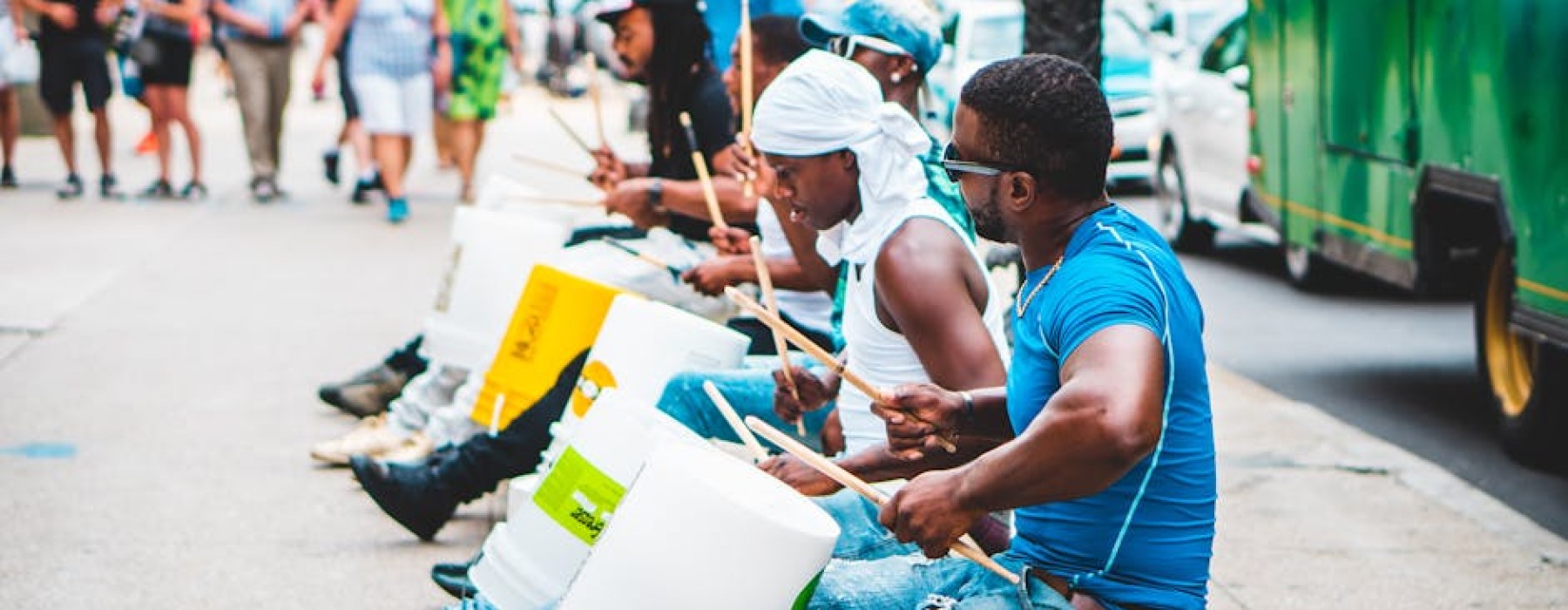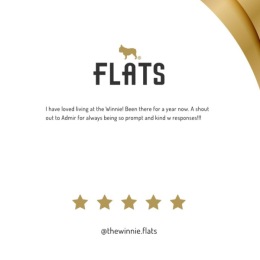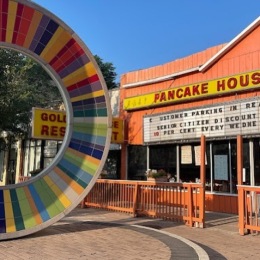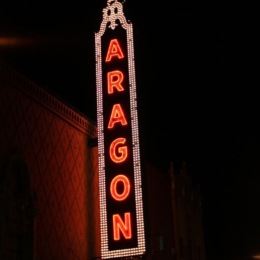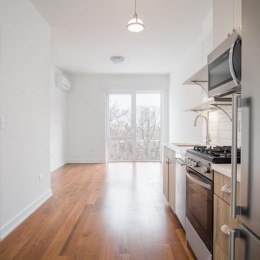Uptown's Musical Heritage: A Vibrant Cultural Scene
Uptown Chicago music venues represent one of the city's most dynamic and historically significant entertainment districts. For those looking to explore Chicago's iconic music scene, here are the must-visit venues in Uptown:
- Green Mill Cocktail Lounge - Chicago's oldest continuously running jazz club (since 1907)
- Aragon Ballroom - Historic venue with stunning Moorish architecture (established 1926)
- Riviera Theatre - Intimate setting with excellent acoustics in a former movie palace
- Double Door - Recently relocated to Uptown in a 100-year-old vaudeville theater
- Carol's Pub - Country western music and late-night honky-tonk atmosphere
For over a century, Uptown Chicago has been the beating heart of the city's diverse music culture. Once a playground for jazz legends during the roaring twenties, today this historic neighborhood continues to pulse with musical energy spanning genres from jazz and blues to indie rock and beyond.
The district's venues aren't just places to catch a show – they're living museums where the ghosts of Chicago's musical past harmonize with contemporary performers. As the Chicago Cultural Center notes, "With more than 200 music venues, Chicago is a world-class destination for live entertainment."
What makes Uptown unique is how these historic venues have adapted through the decades while preserving their architectural charm and cultural significance. Walking into the Green Mill feels like stepping through a time portal to the Prohibition era, while the grandeur of the Aragon Ballroom continues to awe visitors just as it did nearly a century ago.
Whether you're a jazz enthusiast, indie rock devotee, or simply curious about Chicago's musical heritage, Uptown offers an authentic experience that connects you with the city's cultural soul.
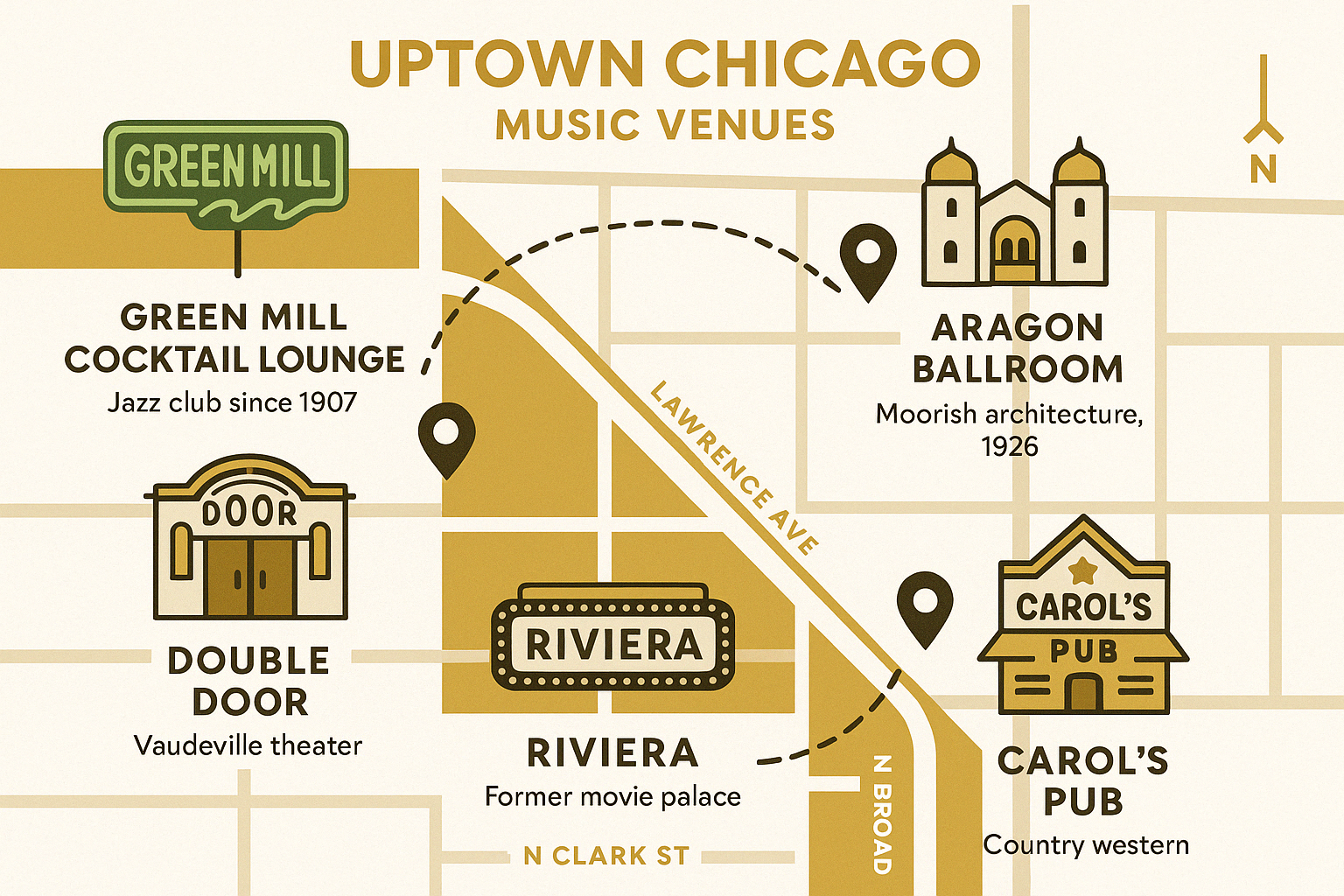
The Evolution of Uptown's Music Scene
When you stroll through Uptown Chicago today, you're walking the same streets where jazz pioneers once created musical history. The neighborhood's rich musical mix began weaving in the early 20th century, coinciding with the Great Migration that brought thousands of African Americans northward. These new Chicagoans carried with them the soulful sounds of the South – blues traditions and early jazz rhythms that would forever change America's musical landscape.
The 1920s saw Uptown transform into an entertainment hotspot. Grand movie palaces and neat ballrooms opened their doors, welcoming crowds eager for entertainment. Thanks to the liftd train lines running through the neighborhood, Uptown became easily accessible to people from all over Chicago, cementing its status as a cultural hub. During Prohibition, venues like the Green Mill didn't close – they simply went underground, becoming speakeasies where jazz flourished behind closed doors.
After World War II, Uptown faced challenges as suburban development drew residents away from urban centers. But the neighborhood proved resilient. The 1960s and 70s brought new waves of immigrants and artists seeking affordable housing and creative community. This influx created the beautifully diverse cultural mix that defines Uptown Chicago music venues today – spaces where you might hear traditional jazz one night, punk rock the next, and Latin rhythms or indie folk over the weekend.
Chicago's reputation as a music capital is well-deserved. With over 200 music venues citywide, the musical heartbeat of Chicago is strong, and Uptown contributes significantly to this vibrant ecosystem. Historic venues standing alongside newer performance spaces create a perfect balance of tradition and innovation.
The city's distinctive musical styles – Chicago Blues with its electric urban edge and House music with its hypnotic beats – have deep connections to Uptown's cultural heritage. Many of these groundbreaking sounds found their first audiences in Uptown Chicago music venues, where experimental artists could test new ideas before receptive crowds.
What makes Uptown truly special is how it embodies a beautiful contradiction – deeply rooted in musical history while remaining remarkably current. The neighborhood's historic venues have been lovingly preserved, maintaining their architectural significance while adapting to contemporary tastes. The ornate details of the Aragon Ballroom still impress concert-goers, while the intimate atmosphere of smaller clubs creates the perfect setting for finding tomorrow's musical stars.
This delicate balance between honoring the past and embracing the future has allowed Uptown to maintain its status as one of Chicago's premier entertainment districts – a place where music history is both celebrated and continuously being made.
Iconic Uptown Chicago Music Venues
Step into Uptown Chicago and you'll find yourself surrounded by musical history that's still very much alive. The heart and soul of this neighborhood's vibrant scene lies in its legendary venues—each with its own personality, stories, and signature sound. These aren't just places to catch a show; they're cultural landmarks that have shaped Chicago's musical identity for generations.
What makes these spots so special isn't just their longevity but their genuine character. Many weren't originally built as concert venues at all—they were movie palaces, ballrooms, or speakeasies that evolved over time. This gives them acoustics and atmospheres that modern venues simply can't replicate, no matter how hard they try.
Let's explore the crown jewels of Uptown Chicago music venues that continue to draw music lovers from across the city and beyond.
The Aragon Ballroom
Standing majestically at 1106 W. Lawrence Avenue, the Aragon Ballroom is truly a feast for the eyes among all Uptown Chicago music venues. When it opened its doors in 1926, it wasn't just another dance hall—it was an escape to another world, with stunning Moorish architecture, intricate details, and a ceiling painted to resemble a starry night sky that still leaves first-time visitors breathless.
In its early days, the Aragon was marketed as "the most beautiful ballroom in the world" and could pack in up to 8,000 dancers on its massive floor. During the 1940s and 50s, the ballroom hosted the biggest names in music—Glenn Miller, Tommy Dorsey, and even Frank Sinatra graced its stage. The Spanish-inspired design with arched doorways, ornate balconies, and those magical "stars" overhead created the perfect backdrop for the romantic sounds of the big band era.
Today, operating as Byline Bank Aragon Ballroom, this historic venue has adapted with the times while preserving its unique character. With a capacity of around 4,500 people, it hosts everything from electronic dance music to heavy metal, indie rock to hip-hop. There's something wonderfully jarring about experiencing cutting-edge music while surrounded by nearly century-old elegance.

The Aragon's guest list reads like a who's who of music royalty through the decades. The Rolling Stones, Nirvana, Green Day, and Kendrick Lamar have all performed under those twinkling stars. Its size hits a sweet spot for artists who've outgrown smaller clubs but want something more personal than an arena.
As Barry Brecheisen of Eater Chicago puts it, "Chicago's indie music scene is a special place," and the Aragon has played a huge role in nurturing that scene by giving both established stars and emerging artists a spectacular stage to connect with Chicago fans.
Find Uptown Chicago Music Venues: The Riviera Theatre
Just a short stroll from the Aragon stands another Uptown treasure—the Riviera Theatre. Built in 1917 by the famed architectural firm of Rapp and Rapp for the Balaban & Katz theater chain, the Riviera began life showing silent films to awestruck audiences. Its Neo-Baroque French-Revival architecture made it a destination in itself, with ornate plasterwork, sparkling chandeliers, and neat details throughout.
The Riviera's story mirrors the changing entertainment landscape of the 20th century. After decades as a movie house, it switched to Spanish-language films in the 1970s before temporarily closing in the early 1980s. Its rebirth as a concert venue in 1986 breathed new life into this architectural gem.
With room for about 2,500 music lovers, the Riviera offers what many consider the perfect concert environment—large enough to generate electric energy but intimate enough to maintain great sightlines and that crucial connection between performers and audience. The theatre's original design, meant to provide the best possible view of the silver screen, works beautifully for live shows, with tiered floors and balcony seating ensuring good views from practically any spot.

"Located in Chicago's historic Uptown theater district, the Riviera Theatre has been a central feature of the city's entertainment scene for over 100 years," notes the venue's official description. This staying power speaks volumes about both the quality of the space and its importance to Chicago's cultural landscape.
The Riviera accepts musical diversity, hosting everyone from indie rock bands like Band of Horses and Silversun Pickups to hip-hop artists, electronic musicians, and even comedians. With several shows each week, it's one of the busiest Uptown Chicago music venues, constantly bringing new sounds and experiences to the neighborhood.
Despite its size, the Riviera somehow maintains an intimate feel. The ornate interior creates a warm, theatrical atmosphere that improves every performance. Musicians often comment on the unique energy here, where history and modern music culture blend seamlessly together.
For a fascinating deep dive into the Riviera's rich history, check out Building Chicago's Riviera Theatre by Robert Loerzel, which chronicles the venue's journey from movie palace to music landmark.
Experience Uptown Chicago Music Venues: Green Mill Cocktail Lounge
No exploration of Uptown Chicago music venues would be complete without the legendary Green Mill Cocktail Lounge. Tucked away at 4802 N. Broadway, this intimate jazz club isn't just a music venue—it's a living piece of Chicago history that continues to set the standard for authentic jazz experiences in the city.
The Green Mill opened in 1907, even before jazz became synonymous with Chicago. It started as Pop Morse's Roadhouse before evolving into the Green Mill Gardens, an outdoor garden inspired by Paris's famous Moulin Rouge ("Red Mill"). During Prohibition, it gained notoriety as Al Capone's favorite hangout. Local lore says his booth—strategically positioned with clear views of both the front and back doors—still stands today.
Step inside and you'll find an art deco interior that's barely changed since the 1930s. From the vintage bar to the booth seating and intimate stage tucked in the corner, every detail transports you to another era. Unlike many historic venues that have been reimagined over time, the Green Mill has stayed true to its jazz roots throughout its existence.
The club features live jazz seven nights a week, with performances ranging from traditional jazz trios to boundary-pushing experimental groups. Sunday nights host the famous Uptown Poetry Slam, credited as the original poetry slam that inspired similar events worldwide.
What makes the Green Mill special is its unwavering commitment to the music itself. As their website humorously notes, "We don't make drinks with egg whites" and "CASH ONLY," emphasizing that this is a place focused on the music first and foremost. The club strictly enforces no-talking policies during performances, ensuring both musicians and attentive listeners can enjoy the experience without distraction.
The Green Mill's weekly schedule shows its dedication to jazz in all its forms. Monday nights belong to the Fat Babies, a traditional jazz band specializing in music from the 1920s and 30s. Tuesdays and Thursdays offer dance-friendly jazz that gets the small dance floor moving, while weekends typically showcase top-tier jazz artists from Chicago and beyond.
As regular patron Kelvin Hill perfectly captures it: "Great late night atmospheres, music is a lil too loud but what the heck does anyone need to say at 3am? Cheap drinks, and always a good crew behind the bar!"
The Green Mill isn't just an important Uptown Chicago music venue—it's a national treasure, one of the few places where you can experience jazz in an authentic setting that has remained largely unchanged for over a century. For jazz lovers, it's nothing short of hallowed ground.
To learn more about upcoming performances and the venue's rich history, visit the Green Mill Cocktail Lounge official website.
Diverse Music Genres in Uptown
What truly sets Uptown Chicago music venues apart isn't just their historic architecture or cultural significance—it's the incredible mix of musical styles that fills these spaces night after night. Unlike neighborhoods that specialize in just one or two genres, Uptown offers a musical feast that satisfies virtually any taste.
Jazz flows through Uptown's veins like a heartbeat. The Green Mill stands as the neighborhood's jazz sanctuary, where the full spectrum of the genre lives and breathes. One night you might catch a traditional New Orleans-style quartet swinging through standards, while the next evening might feature boundary-pushing experimental compositions that challenge what jazz can be. This commitment to jazz in all its forms makes Uptown a must-visit destination for aficionados and curious newcomers alike.
Rock and indie music thrive in the neighborhood's larger venues, particularly the Riviera Theatre and Aragon Ballroom. These historic spaces have welcomed everyone from emerging local bands to international touring acts. There's something magical about experiencing alternative rock in a venue with nearly a century of musical history in its walls—the acoustics seem to carry not just today's sound but echoes of performances past.
Country music might not be the first genre you associate with Chicago, but Carol's Pub has been keeping the honky-tonk spirit alive as "Chicago's oldest country western bar." Step inside and you're transported to a slice of Nashville in the heart of Uptown, complete with live bands, dancing, and late-night karaoke sessions that often stretch into the early morning hours. The unpretentious atmosphere makes it a favorite for both dedicated country fans and the country-curious.
Electronic music has found a particularly welcoming home at the Aragon Ballroom. The venue's spacious floor—originally designed for ballroom dancing in the 1920s—now pulses with electronic beats and dancing crowds. The Aragon's fantasy Moorish architecture creates the perfect backdrop for EDM's immersive light shows and visual projections, making it one of the most distinctive electronic music venues in the Midwest.
World music flourishes throughout Uptown, reflecting the neighborhood's position as one of Chicago's most culturally diverse areas. From Latin rhythms to African beats, Asian musical traditions to European folk styles, the community's stages regularly showcase global sounds that bring together Chicago's immigrant communities and music lovers seeking new sonic experiences.
Blues—perhaps Chicago's most famous musical export—maintains a steady presence in Uptown despite being more commonly associated with the city's South Side. The raw emotion and authentic delivery of Chicago blues finds expression on various Uptown stages, keeping this essential tradition alive and evolving in the northern neighborhoods.
Hip-hop and R&B artists increasingly grace Uptown's larger venues, particularly the Riviera and Aragon, drawing diverse crowds that bridge cultural divides through shared musical experiences. These performances often highlight Chicago's own considerable contributions to hip-hop culture while also showcasing national acts.
Even spoken word and comedy deserve mention in Uptown's performance landscape. The Green Mill's Uptown Poetry Slam, running since 1986, literally launched the international poetry slam movement. The weekly event continues to draw performers and audiences who appreciate the raw power of the spoken word.
This remarkable diversity means that on any given night, someone living at The Winnie Apartments could step out their door and choose between a traditional jazz quartet, an indie rock band, an electronic dance music DJ, a country western group, or a poetry slam—all within a few blocks of their home. Few entertainment districts in any city can boast such variety, making Uptown truly unique in Chicago's cultural landscape and an ideal neighborhood for music lovers of all stripes.
Unique Features That Attract Visitors
What is it about Uptown Chicago music venues that keeps drawing music lovers back night after night, year after year? It's more than just the music—it's the entire experience that can't be replicated anywhere else in the city.
The jaw-dropping architecture alone is worth the visit. Walking into the Aragon Ballroom feels like stepping into a Moorish fantasy world with its twinkling star-filled ceiling and intricate details that transport you far from everyday Chicago. The Riviera Theatre's Neo-Baroque elegance adds a touch of sophistication that lifts every performance, making even an ordinary Tuesday night feel special.
But these architectural marvels aren't just pretty faces—they create magical acoustic environments. The Riviera's thoughtfully designed space creates a sound quality that modern venues spend millions trying to recreate. At the Green Mill, the compact, intimate setting allows jazz notes to float perfectly to every corner without overwhelming amplification. You can hear a saxophone whisper or a brush stroke on a drum with crystal clarity.
"I've been coming to the Green Mill for twenty years, and there's still nothing like hearing live jazz in this room," says longtime patron Robert K. "The sound just wraps around you in a way that feels personal."
The history embedded in these walls adds another layer of magic. Standing where Al Capone once sat at the Green Mill or on the same dance floor where couples swayed to big bands in the 1940s creates a connection to Chicago's past that resonates deeply. Music fans increasingly crave these authentic experiences with real historical connections.
The intimacy of these spaces offers something increasingly rare in today's entertainment world. Instead of squinting at distant figures on arena stages, at Uptown Chicago music venues you might find yourself close enough to see the guitarist's fingers move or make eye contact with the singer. These personal moments create memories that last far longer than the typical concert experience.
These venues don't just exist in the neighborhood—they're vital parts of it. Many participate actively in local cultural events, support community initiatives, and serve as gathering places beyond their musical offerings. This deep community connection creates a welcoming vibe that visitors notice immediately. You're not just attending a show; you're being welcomed into a space that matters to the people who live there.
The programming diversity ensures there's something for everyone. On any given night, you might find traditional jazz at the Green Mill, an indie rock show at the Riviera, electronic dance music at the Aragon, or country western at Carol's Pub. This variety draws wonderfully diverse crowds, creating an inclusive atmosphere where all music lovers can feel at home.
Each venue has its own cherished traditions that improve the experience. The Green Mill's strict "no talking during performances" policy might surprise first-timers, but jazz aficionados appreciate the focused listening environment it creates. The Sunday night Uptown Poetry Slam has maintained its specific format for decades, becoming a cultural institution with its own distinct personality.
Meredith M., a regular at one of Uptown's smaller venues, captures the neighborhood's appeal perfectly: "This amazing lounge has the BEST karaoke in CHITOWN, hands down!! They have ALL the songs ~ new & old!!" It's this blend of honoring tradition while embracing what's new that keeps Uptown Chicago music venues feeling timeless yet fresh.
When you combine stunning historic architecture, perfect acoustics, intimate performance spaces, deep community roots, diverse programming, and unique traditions, you get something far more valuable than just places to hear music. Uptown Chicago music venues offer immersive cultural experiences that connect you to the city's rich musical soul while creating new memories you'll cherish for years to come.
Notable Performances and Events
The hallowed stages of Uptown Chicago music venues have witnessed some truly unforgettable musical moments over the decades. These historic venues have hosted everything from jazz pioneers during Prohibition to today's chart-topping superstars, creating a rich mix of musical history that continues to unfold.
The intimate stage at the Green Mill has welcomed jazz royalty since the Roaring Twenties. During Prohibition, when gangsters ran the show and secret passwords got you through the door, legends like Joe "King" Oliver would fill the smoky room with sounds. The tradition continues today, with the club serving as home base for Chicago's thriving jazz community while welcoming international talents who consider playing this historic space a badge of honor.
"Playing the Mill is like stepping into a time machine," one veteran jazz musician recently noted. "You can feel the ghosts of everyone who's performed there before you."
The majestic Aragon Ballroom boasts perhaps the most star-studded history of all Uptown Chicago music venues. During its big band heyday in the 1940s and 50s, dancing couples would glide across the floor to the sounds of Duke Ellington, Count Basie, and Benny Goodman orchestras. As musical tastes evolved, so did the Aragon, embracing psychedelic rock in the 60s, punk in the 70s, and virtually every genre since.
The Aragon's guest book reads like a music history textbook: The Rolling Stones shook the Moorish arches in the 1970s, Nirvana's raw energy reverberated through the space in the 90s, while more recently, artists like Lorde and Kendrick Lamar have created their own memorable nights under the starry ceiling. Many artists specifically request to play the Aragon even when they could fill larger venues, drawn by its unique atmosphere and storied past.
Since its change from movie palace to concert venue in the 1980s, the Riviera Theatre has built its own impressive legacy. Early performances by R.E.M. and Soundgarden helped cement its reputation as a premier rock destination. The Riv, as locals affectionately call it, has a knack for hosting artists at pivotal moments in their careers – like Adele's passionate performance just before her meteoric rise to superstardom, or hometown hero Chance the Rapper's triumphant shows as he was redefining Chicago hip-hop.
The newest addition to Uptown Chicago music venues, Double Door, brings its own illustrious history from its original Wicker Park location. Having hosted breakthrough performances by Chicago icons like The Smashing Pumpkins and Kanye West, its relocation to a historic Uptown theater space promises to add another vibrant dimension to the neighborhood's musical landscape.
Beyond individual concerts, Uptown's venues have nurtured cultural institutions that transcend any single performance. The Green Mill's Uptown Poetry Slam, running continuously since 1986, pioneered a format that has spread to cities worldwide. Every Sunday night, poets still gather to share their words in the same space where this global movement began.
The neighborhood's venues also play crucial roles in citywide celebrations like the Chicago Jazz Festival, which often includes performances at these historic locations. Album release parties are another Uptown tradition, with local artists choosing these meaningful spaces to introduce new music to the world.
Some of the most magical Uptown music moments have come from unexpected appearances – jazz legends sitting in for impromptu late-night sessions at the Green Mill, or surprise guest performers joining headliners at the Riviera or Aragon. These unplanned musical gifts create cherished memories for lucky audience members.
What makes performances at Uptown Chicago music venues truly special is the extraordinary context these historic spaces provide. Hearing jazz notes float through the Green Mill, where they've been played continuously for over a century, creates a connection to musical history that's impossible to manufacture. Watching your favorite band perform beneath the Aragon's twinkling "stars" – the same stars that have witnessed countless legendary performances – adds a dimension that no modern venue can replicate.
These historic venues don't just host concerts – they create experiences that become part of Chicago's ongoing musical story.
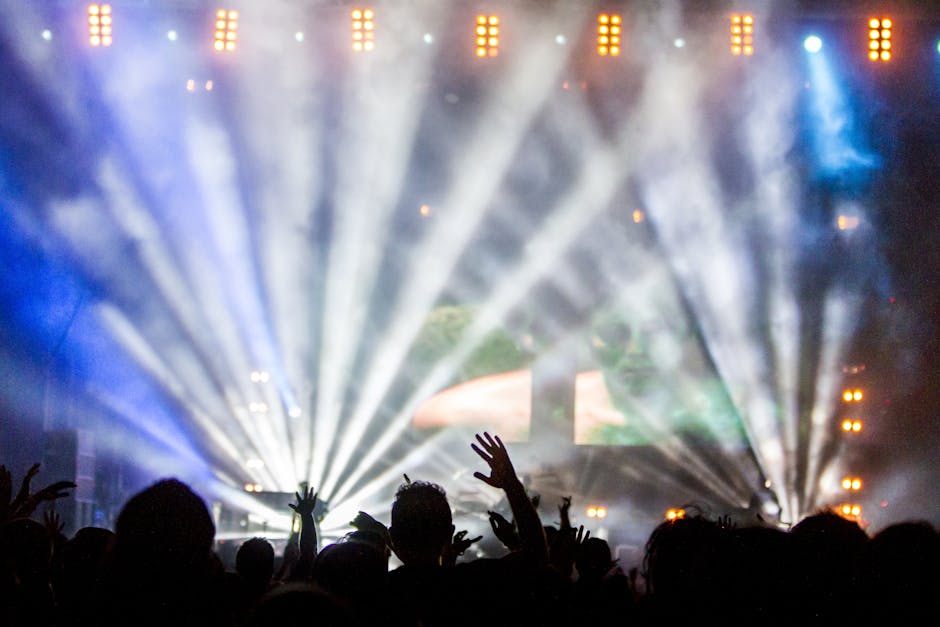
Uptown's Contribution to Chicago's Music Scene
When you look at Chicago's musical landscape, Uptown Chicago music venues shine as true gems that have helped define the city's sound for generations. While other neighborhoods have their musical charms, Uptown stands apart with its perfect blend of history and innovation.
What makes Uptown special? Unlike Wicker Park and Logan Square with their cozy indie spots, or the massive concert halls downtown, Uptown offers something wonderfully in-between. Here, you'll find everything from intimate jazz clubs where you can see the sweat on a saxophone player's brow to mid-sized historic theaters where national acts perform in architectural splendor. This variety creates a musical ecosystem few neighborhoods can match.
Perhaps most remarkable is Uptown's staying power. While entertainment districts have come and gone across Chicago, Uptown has maintained its musical soul for nearly a century. The Green Mill has been serving up jazz continuously since 1907 – that's older than many American cities' entire music scenes! This isn't just longevity for longevity's sake; it's created deep cultural roots that continue to nurture new musical growth.
The preservation of Uptown's architectural treasures deserves special recognition. In an era when developers often demolish historic venues for luxury condos, Uptown has managed to protect its architectural gems. The ornate Riviera Theatre and the majestic Aragon Ballroom continue to host performances in spaces that tell their own stories through Spanish arches and art deco details. Even the currently dormant Uptown Theatre stands as a testament to an era when entertainment venues were designed as palaces for the people.
Uptown Chicago music venues have played a crucial role in keeping Chicago's homegrown musical traditions alive while helping them evolve. The Green Mill remains a cornerstone of the city's jazz scene, honoring traditions that stretch back to the Prohibition era while providing space for today's innovators to push boundaries. This same spirit of preservation-meets-innovation applies to how other Uptown venues have nurtured Chicago blues, house music, and indie rock through the decades.
The neighborhood's musical diversity mirrors Chicago itself – a city of neighborhoods, each with its own character but forming something greater together. On any given night in Uptown, you might hear traditional jazz, cutting-edge rock, pulsing electronic music, or soulful blues – sometimes all within a one-block radius. This musical melting pot creates an environment where genres cross-pollinate and new sounds emerge.
Uptown's venues also serve as cultural meeting grounds. In a city that has struggled with segregation, these music spaces bring together Chicagoans from all backgrounds who share a love of music. There's something powerful about standing shoulder to shoulder with fellow music lovers from different neighborhoods, backgrounds, and generations, all moved by the same performance.
Beyond the cultural impact, Uptown Chicago music venues drive significant economic activity. Concert-goers don't just buy tickets – they grab dinner at nearby restaurants, drinks at local bars, and sometimes even book hotel rooms. This cultural economy creates jobs and helps maintain the neighborhood's commercial vibrancy, benefiting businesses far beyond the venues themselves.
The neighborhood also serves as a musical ladder, offering opportunities for musicians at every stage of their careers. From open mic nights where nervous beginners can test their material to prestigious stages where established artists perform for packed houses, Uptown provides a complete ecosystem for musical growth. Many Chicago musicians have stories about their first Green Mill jam session or their breakthrough show at the Riviera.
Finally, these historic venues have made Uptown a magnet for music tourism. Visitors from around the world seek out the Green Mill to soak in its Prohibition-era atmosphere and world-class jazz. Music lovers plan entire Chicago trips around shows at the Aragon or Riviera. These music tourists not only boost the local economy but become ambassadors who spread Chicago's reputation as a music capital globally.
Through preserving historic spaces, embracing musical diversity, fostering cultural exchange, driving economic growth, nurturing talent, and attracting visitors, Uptown Chicago music venues have earned their place as essential contributors to Chicago's musical identity. Their continued vitality ensures that Chicago's musical future will remain as vibrant and diverse as its storied past.
Enhancing Uptown's Nightlife Experience
The magic of Uptown Chicago music venues extends well beyond the music itself. When you step out for a night in Uptown, you're entering a vibrant ecosystem where every element—from pre-show dining to post-concert gatherings—creates an immersive cultural experience that transforms a simple concert into an unforgettable urban trip.
In recent years, the dining scene surrounding these iconic venues has blossomed into a culinary destination in its own right. Before catching jazz at the Green Mill or an indie show at the Riviera, music lovers can savor authentic Ethiopian flavors at Demera, indulge in Hong Kong-style BBQ at the beloved Sun Wah, or enjoy contemporary American dishes at the numerous restaurants dotting Broadway and Clark Street. These dining experiences aren't just about satisfying hunger—they're the opening act to your evening's cultural journey.
"Uptown Chicago is a captivating blend of historic charm and modern flair," as one visitor perfectly described it. This sentiment captures the essence of the neighborhood's nightlife, where century-old venues stand alongside sleek cocktail bars, creating a rich mix of experiences that span generations.
The craft cocktail renaissance has found a natural home in Uptown, with sophisticated bars offering creative libations that often pay homage to the neighborhood's Prohibition past. These establishments have mastered the art of honoring history while satisfying contemporary tastes—much like the music venues themselves. There's something deeply satisfying about sipping a perfectly crafted Old Fashioned in a bar just blocks from where Al Capone once enjoyed his illicit drinks.
One of Uptown's greatest nightlife advantages is the proximity of its venues to each other. Unlike some entertainment districts that require Uber hops between destinations, here you can easily catch an early jazz set, stroll a few blocks to a rock show, and finish your night with cocktails or late-night bites, all within a comfortable walking radius. This density creates a naturally flowing evening where one experience leads seamlessly to the next.
As darkness falls, Uptown's architectural heritage takes on a magical quality. The illuminated marquees of the Riviera and Aragon become guides in the night, visible from blocks away. These glowing signs aren't just practical wayfinding tools—they're emotional connectors linking today's concert-goers with the countless music lovers who've been drawn to these same landmarks for nearly a century.
The music often spills beyond venue walls, with street performers and impromptu gatherings creating unexpected moments of connection. On warm summer nights especially, the sidewalks themselves become extensions of the performance spaces, with post-show discussions and spontaneous musical moments adding an element of serendipity to the evening.
When shows conclude and appetites return, Uptown offers a wealth of late-night dining options. From cozy diners serving comfort food to busy taquerias and pizza joints, these establishments provide the perfect setting to dissect the night's performances over shared meals and continue the evening's conversations.
Transportation accessibility is another key element enhancing Uptown's nightlife. The neighborhood is exceptionally well-served by public transit, with the Red Line and numerous bus routes making it easy for visitors from across Chicago to enjoy performances without worrying about parking or designated drivers. This connectivity encourages responsible enjoyment and makes Uptown's cultural offerings accessible to all.
Throughout the year, seasonal events and festivals periodically transform the neighborhood, bringing fresh energy and new visitors. Summer street festivals, holiday celebrations, and special concert series create peak moments that showcase Uptown at its most vibrant.
Perhaps most importantly, the diverse crowd that Uptown Chicago music venues attract creates an atmosphere of cosmopolitan energy. On any given night, the streets fill with music enthusiasts spanning generations, backgrounds, and musical tastes, creating a microcosm of Chicago's celebrated diversity.
Matthew Villareal, a regular visitor, captures this vibrant atmosphere perfectly: "Awesome place. Great employees. Plus Papa Ray's Pizza is very close by. Good prices. Very swanky. I highly recommend visiting them."
For residents of The Winnie Apartments, this rich nightlife scene represents one of the neighborhood's most compelling amenities. Living within walking distance of world-class music venues transforms the concert experience from an occasional special event to a seamless extension of everyday life. The luxury of strolling home after a show, still humming with the energy of a live performance, is one of those intangible benefits that makes Uptown living so special.
Frequently Asked Questions about Uptown Chicago Music Venues
What are the must-visit music venues in Uptown Chicago?
When music lovers ask about the essential stops in Uptown, I always point them to the neighborhood's magnificent "big three" alongside a couple of hidden gems. The Green Mill Cocktail Lounge on Broadway stands as Chicago's oldest continuously running jazz club, taking you back to 1907 with its authentic performances and fascinating Prohibition-era connections. The Sunday night poetry slams here have become legendary in their own right, drawing creative spirits from across the city.
Just down the street, the majestic Aragon Ballroom (now operating as Byline Bank Aragon Ballroom) stops first-time visitors in their tracks with its stunning Moorish architecture and twinkling starry ceiling. Since 1926, this grand space has hosted everyone from big band legends to today's hottest contemporary artists, all within its fantastical atmosphere that feels worlds away from ordinary Chicago.
The Riviera Theatre offers perhaps the perfect balance of size and intimacy. This 1917 movie palace retains its ornate interior details while providing what many musicians consider the ideal acoustic environment. Standing in the Riv during a show, you can feel the century of entertainment history in the walls while enjoying perfect sightlines to the stage.
For something a bit different, check out the newly relocated Double Door on Wilson Avenue. After establishing itself as a Chicago music institution in Wicker Park, this venue has found new life in a historic Uptown vaudeville theater, bringing diverse performers to eager audiences in a fresh-yet-familiar setting.
And don't miss Carol's Pub if you're craving something completely different from the rest of Uptown's offerings. This self-proclaimed "oldest country western bar in Chicago" delivers honky-tonk vibes, live country music, and a refreshingly unpretentious atmosphere that provides the perfect complement to the neighborhood's other venues.
What genres of music can I expect to find in Uptown venues?
One of the most beautiful things about Uptown Chicago music venues is how they collectively showcase nearly every musical style imaginable within just a few blocks. The Green Mill serves as the neighborhood's jazz headquarters, where traditional standards and cutting-edge contemporary jazz fill the intimate space nightly, creating a direct connection to Chicago's rich jazz heritage.
Rock and indie music find their perfect home in the Riviera and Aragon, where both established acts and emerging artists deliver unforgettable performances against historic backdrops. The acoustics of these venues seem perfectly suited to guitar-driven music, with just the right amount of natural reverb to improve without overwhelming.
Electronic music fans have increasingly flocked to the Aragon in recent years, where the spacious dance floor (a remnant of its ballroom dancing days) provides ample room for movement while the fantastical architecture creates the perfect setting for immersive audio-visual experiences.
Country and folk sounds ring out regularly at Carol's Pub, where traditional twang meets urban energy in a uniquely Chicago blend. Meanwhile, blues performances appear throughout the neighborhood, keeping Chicago's signature musical contribution alive and thriving in the northern neighborhoods.
The diversity continues with hip-hop and R&B artists regularly taking the stages at larger venues, while world music from various global traditions reflects Uptown's wonderfully diverse population. And for something completely different, the spoken word tradition thrives at events like the Green Mill's famous Uptown Poetry Slam on Sunday nights.
This remarkable musical diversity means you could spend a week visiting Uptown Chicago music venues and experience a completely different sound and atmosphere each night - or even venue-hop in a single evening to create your own musical trip spanning genres and traditions.
How do Uptown's music venues compare to those in other Chicago neighborhoods?
While every Chicago neighborhood has its own musical personality, Uptown Chicago music venues stand apart in ways that make them truly special within the city's cultural landscape. The historical significance alone sets them in a category of their own - while Wicker Park and Logan Square offer excellent contemporary venues, they simply can't match the century-deep cultural roots of the Green Mill (1907), Riviera Theatre (1917), and Aragon Ballroom (1926).
The architectural splendor of Uptown's venues creates environments that transform musical performances. Standing under the Aragon's twinkling "stars" or surrounded by the Riviera's ornate detailing connects today's concert experiences with generations of entertainment seekers who have been awed by these same spaces. This historical continuity adds layers of meaning that newer venues, however well-designed, simply cannot provide.
Uptown uniquely offers venues across the size spectrum, from the intimate Green Mill (approximately 150 capacity) to the mid-sized Riviera (around 2,500) and the larger Aragon (about 4,500). This range allows the neighborhood to host everything from up-close-and-personal jazz performances to major touring acts, creating a complete musical ecosystem within a few blocks.
The genre diversity in Uptown stands best by most other neighborhoods, which tend to specialize in particular styles. While the South Side rightfully claims blues heritage and the West Loop has its cluster of electronic music venues, Uptown collectively showcases virtually every style of music, making it a true one-stop destination for diverse musical appetites.
What makes Uptown particularly special is how deeply integrated its venues are into the neighborhood's broader cultural landscape. Unlike some entertainment districts that feel separate from everyday city life, Uptown's venues exist alongside diverse restaurants, shops, and residential areas, creating an authentic urban experience where music feels like a natural extension of community life.
Accessibility adds another advantage, with excellent public transportation connections including the Red Line and numerous bus routes making Uptown's venues easily reachable for visitors without cars. This accessibility has helped the neighborhood maintain its status as a destination for music lovers from across the city and beyond.
As Barry J., a frequent visitor to Chicago's various entertainment districts, notes: "While Uptown is celebrated for its cultural diversity and historic venues, neighborhoods such as Wicker Park, Logan Square, and River North also offer vibrant nightlife experiences." Each area certainly has its distinct character and appeal, but Uptown's unique combination of historical significance, architectural grandeur, and musical diversity makes it an essential destination for anyone wanting to experience the full spectrum of Chicago's musical heritage and contemporary creativity.
Conclusion
Uptown Chicago music venues aren't just places to catch a show—they're living, breathing time capsules of Chicago's rich cultural mix. These venues tell the story of our city through both their historic walls and the performers who grace their stages night after night.
Walk into the Green Mill and you're stepping back to the Prohibition era, when jazz flowed as freely as the illegal liquor. Stand under the Aragon Ballroom's twinkling "stars" and you're sharing the same magical experience that captivated dancers nearly a century ago. The ornate details of the Riviera Theatre and the down-home warmth of Carol's Pub each offer their own unique slice of Chicago's musical heritage.
What makes these spaces truly special is their authenticity. Unlike the manufactured "historic districts" popping up in cities across America, Uptown's venues are the real deal. That art deco bar at the Green Mill? Original. The Aragon's spectacular ceiling? Just as it was in 1926. These aren't reproductions or carefully crafted imitations—they're genuine artifacts that have survived decades of Chicago's ever-changing cultural landscape.
For music lovers, Uptown offers an embarrassment of riches. On any given evening, you might catch cutting-edge jazz at the Green Mill, an indie rock sensation at the Riviera, an electronic music spectacle at the Aragon, or boot-stomping country at Carol's Pub—all within a few blocks of each other. Few neighborhoods anywhere can boast such musical diversity in such a compact, walkable area.
For residents of The Winnie Apartments, this vibrant music scene isn't just a weekend treat—it's part of everyday life. Imagine finishing work and strolling a few blocks to catch a world-class jazz performance, or having the option to see major touring acts without dealing with rideshare surges or parking nightmares. When the show ends, home is just minutes away, with perhaps a stop at a local restaurant to cap off the perfect evening.

Living in Uptown means more than just proximity to great music—it means becoming part of a community that values cultural experiences. Residents develop familiar relationships with venue staff, recognize fellow regulars, and feel a sense of ownership and pride in these historic spaces. There's something special about telling friends, "My neighborhood spot used to be Al Capone's hangout" or "I can see the Riviera's marquee from my window."
As noted by the Chicago Cultural Center, our city boasts over 200 music venues, making it a true paradise for music enthusiasts. Uptown's contribution to this scene is both substantial and distinctive—preserving architectural gems while continuing to showcase diverse musical talents from around the world.
The Winnie Apartments offer the perfect home base for immersing yourself in this musical wonderland. With comfortable, modern living spaces just steps away from legendary venues, residents enjoy the best of both worlds: contemporary comfort and historic charm.
Whether you're drawn to the improvisational magic of late-night jazz sessions, the energy of rock concerts in historic theaters, or simply the vibrant atmosphere of a neighborhood where music matters, Uptown and The Winnie Apartments hit all the right notes. Here, the soundtrack of city life plays on, connecting today's residents with generations of music lovers who have called this special neighborhood home.


